Our planet has many amazing places that, once seen, can never be forgotten. One of these is the westernmost point of Europe — Cape Roca in Portugal. Beyond the ocean separating Europe lies America, though when the cape is shrouded in fog, it feels like the edge of the earth. Those planning a trip to this unique place will have the opportunity to witness an unforgettable sunset on one of the tours.
History
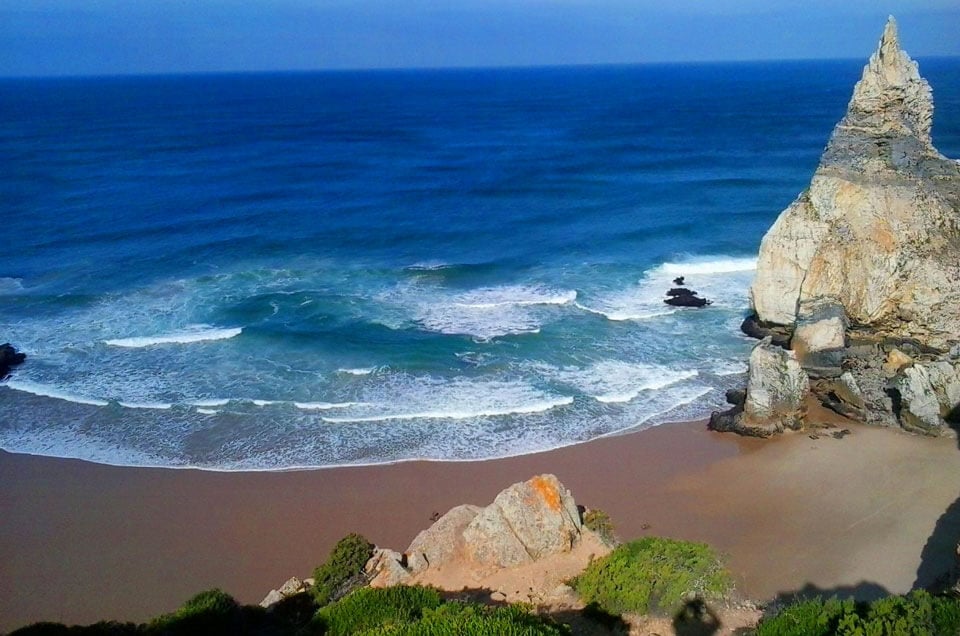
The small triangular landmass jutting into the Atlantic Ocean is formed by the granite cliffs of the Sierra da Sintra mountains. During the age of maritime exploration and great geographical discoveries, this westernmost point of Europe was named the Lisbon Cape. Later, it was renamed Cabo da Roca, which translates from Portuguese as Cape of the Rock. Indeed, it consists of a rock made of granite with inclusions of other crystalline rocks.
Given the busy maritime route past the cape, a lighthouse was erected here in 1772, its light visible for several tens of kilometers. It warns sailors of the rocky coastline ahead, which is dangerous for ships. This land triangle is part of the Sintra-Cascais National Park. Several of its sites are listed as UNESCO World Heritage Sites. The geographical coordinates of the cape are indicated on a stone stele.
Description
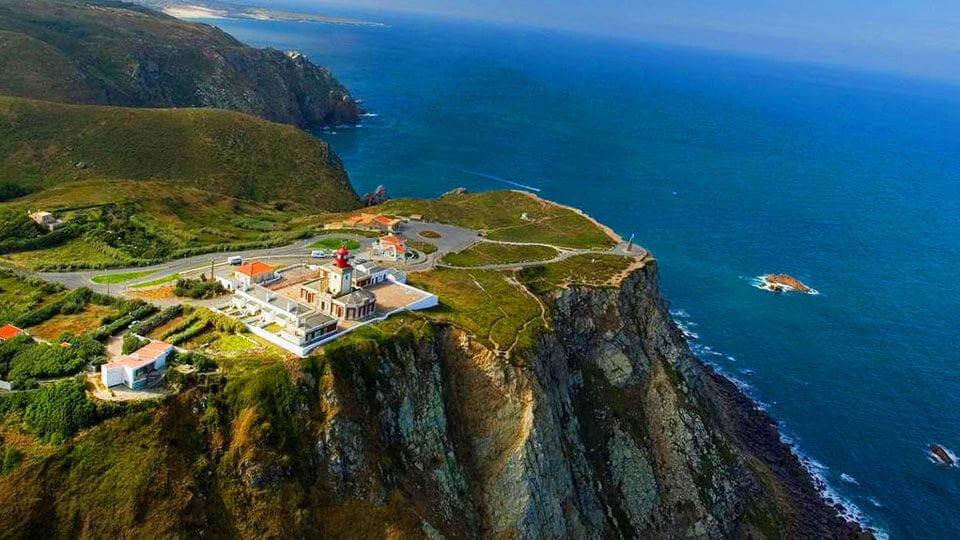
The cape’s summit, covered with small hills, rises 150 meters above the ocean. Its western coast features small sandy beaches interspersed with protruding low, partially destroyed rocks. Due to cracks in the pink granite filled with dark magma, the rocks appear striped, making them very picturesque. There is almost always wind here, sometimes very strong.
Powerful waves have been crashing against the rocks for millennia, eroding the granite. The saying “water wears away stone” comes to mind, as even granite is powerless against water. The surrounding area is rich in diverse flora. The cape itself is covered with hardy succulents with fleshy leaves and bright yellow and red flowers. This creeping plant, introduced from South Africa and known as the edible carpobrotus, has become a scourge for local farmers and their fields.
The plant resembles purslane, which grows actively as a weed in our gardens. On the way to Roca lies the historic town of Sintra, once the residence of Portuguese kings and now a climatic resort. It has preserved architectural monuments reflecting Portugal’s history. There are also other interesting protected sites.
What to See
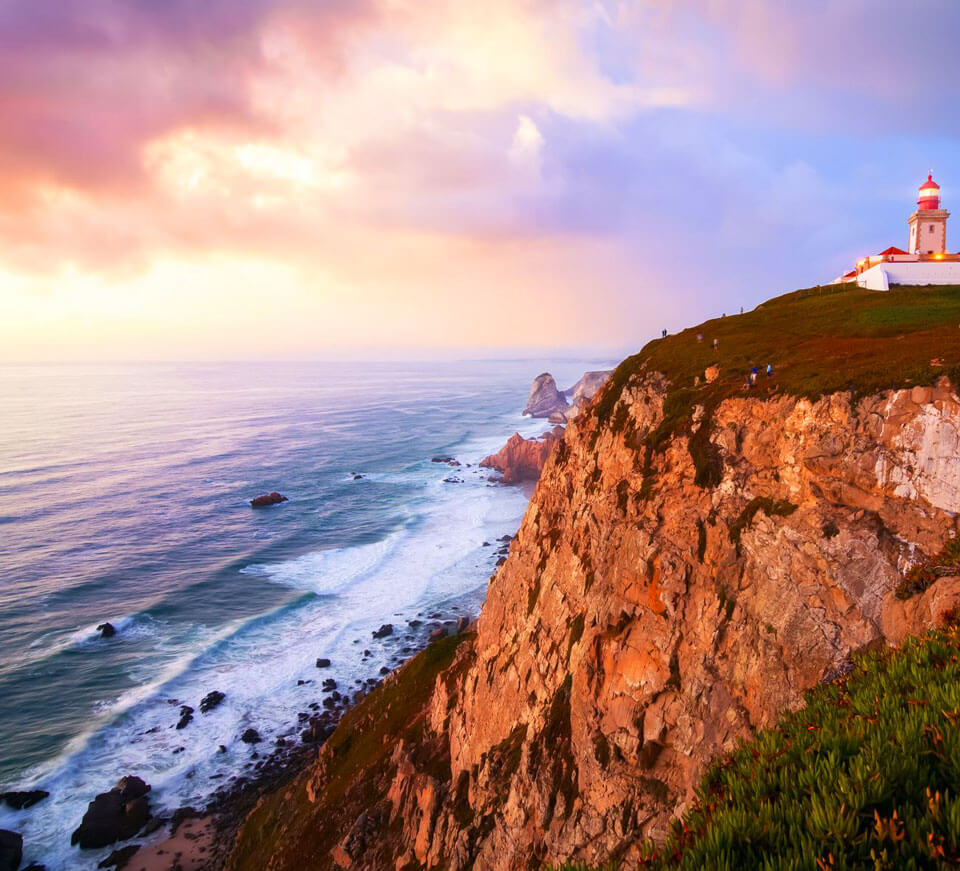
The main attraction of the area surrounding the cape is the otherworldly beauty of the landscapes, which are worth the trip. The yellow-red cliffs look especially stunning in the crimson sunset light, washed by the frothy lace of powerful ocean waves. Tourists usually head straight to the legendary lighthouse and its tower and the tourist center building. The stele topped with a cross also attracts attention. Besides the geographical coordinates, it bears a quote from the poet Camões: “Here, the land ends, and the sea begins.”
Descending to the beaches via the crumbling cliffs requires caution. Small sandy beaches are adjacent to rocky areas. A light, purely symbolic fence runs along the coast. Tourists can stay at a local hotel if they wish to spend several days here. The restaurant offers delicious national seafood dishes. At the post office, tourists can buy a certificate of their visit to Cape Roca.
Tours

Given the growing tourist interest in this exotic place, the tourism industry offers various tour routes to Cape Roca through the Sintra-Cascais National Park. These tours provide the opportunity to see historical, architectural, and natural attractions. Group and individual tours introduce tourists to favorite spots of Portuguese kings, famous palaces and castles, beaches of the Lisbon Riviera, and the surrounding flora and fauna.
During a few hours (2-8), you can walk the old streets of Sintra, admire the unparalleled view of its palaces, visit the elite resort of Cascais, and see Cape Roca (Greater Lisbon in one day). A 5-hour tour “Sunset at Cape Roca” will allow you to see all the main attractions of Sintra, experience true Portuguese color, and enjoy the magnificent sunset at Cape Roca.
By participating in a 5-hour tour along the Atlantic coast, you can hear the powerful roar of waves in the “Devil’s Mouth” cave, walk over the sandy dunes of Guincho, and the cliffs of Bear Beach. All the tours offered in Lisbon to the legendary cape will leave unforgettable impressions.
Location and How to Get There
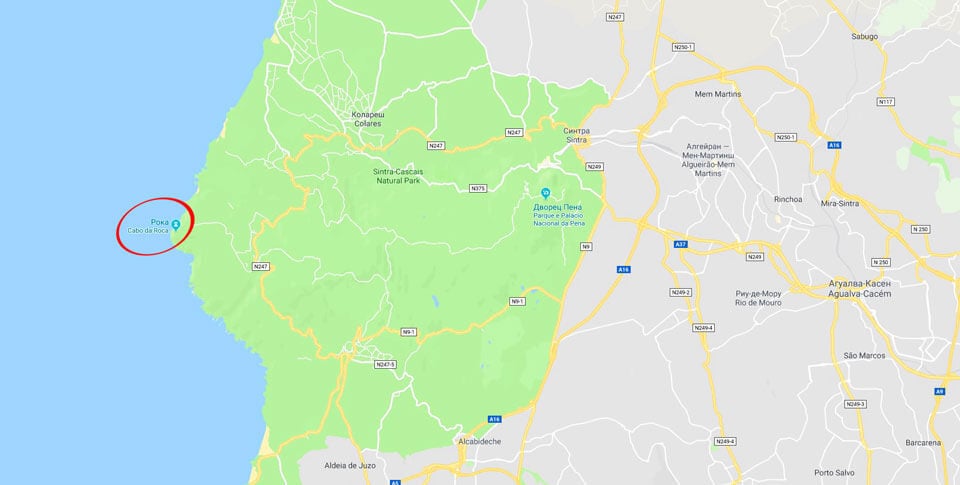
Cape Roca is the westernmost point of Europe and the Sintra-Cascais National Park. The park is crossed by the mountain range of Serra de Sintra, stretching to Cabo da Roca (Cape Roca). The granite cliffs of these mountains form the unique cape. There are two ways to get from Lisbon to the cape: travel to Sintra by public transport and continue to the cape from there, or travel from Lisbon to Cascais and then take a bus to Cape Roca.
Through Sintra
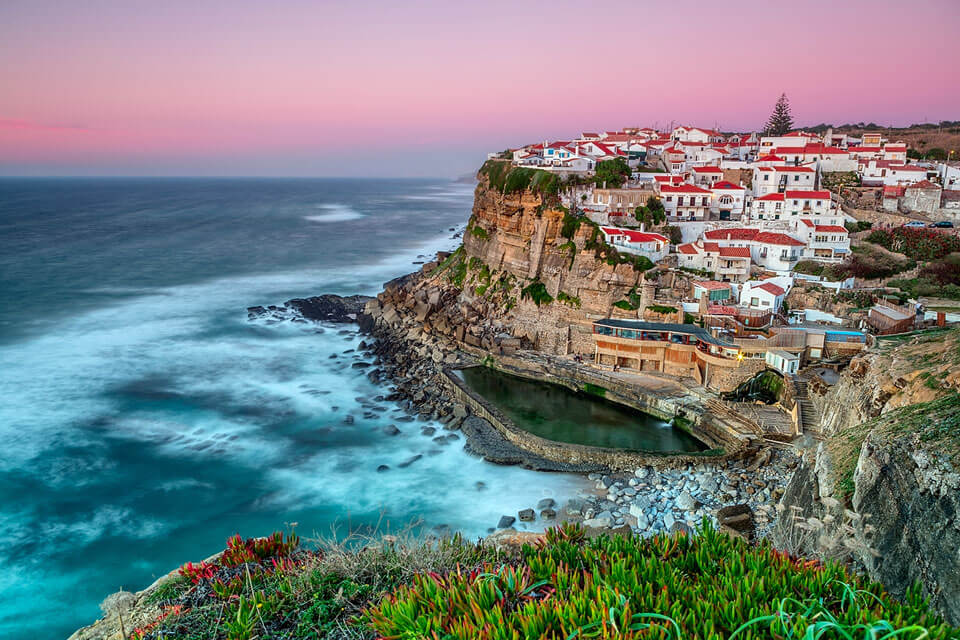
The advantages of traveling through Sintra are obvious: this ancient city is famous for its royal palaces, which are worth seeing. Trains regularly run from Lisbon to Sintra from the Rossio railway station (the city’s historic center). Tickets cost €3 and are sold at the ticket office and in machines. Upon leaving the station, walk right to the bus stop, take bus No. 434 (circular route), and get off at the stop for the Pena Palace ticket office.
Buy a ticket (€5), board a minibus, and in a few minutes, you’ll be at the brightly colored toy-like Pena Palace. After admiring the exotic architecture, you can descend through the adjoining park to reach the Moorish Castle. Examining the remains of the castle’s walls, you can appreciate the enormous labor invested in the fortress.
Near the Moorish Castle is the Quinta da Regaleira estate with its elegant palace and picturesque park. Sculptures, unusual towers, and underground grottoes are all very interesting! Take bus No. 435 to the Monserrate Palace, built in the Indian style. The exotic sight will be worth the time spent. Then, return to the train station, take bus No. 403, and in 30-35 minutes, you’ll be at the cape.
Through Cascais
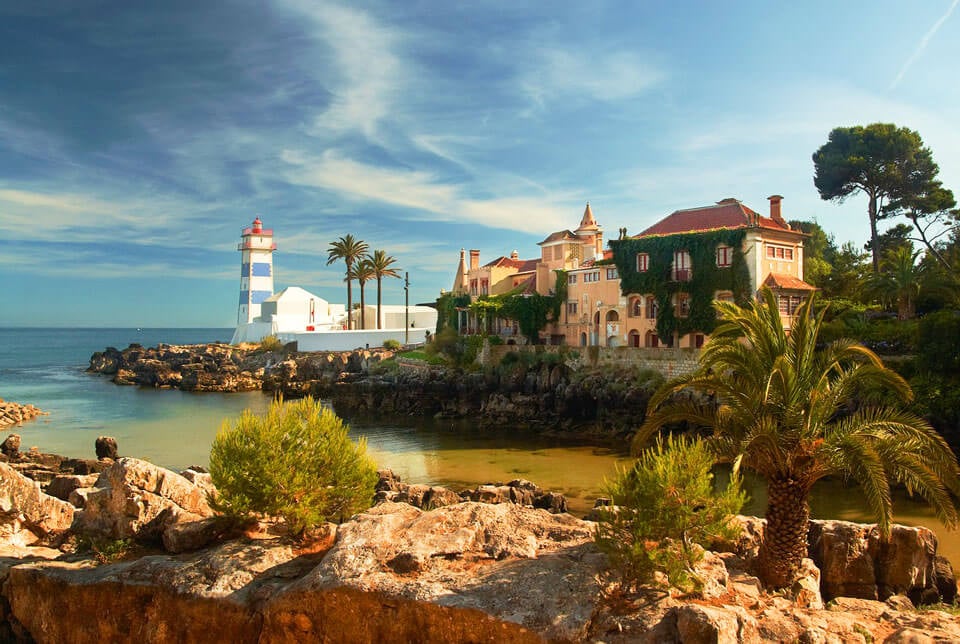
The route from Cascais to Cape Roca is shorter than from Sintra. Trains run from Lisbon to Cascais daily from the Cais do Sodré station. The first train leaves at 5:30 AM, the last at 1:30 AM, with a 20-minute interval. The former fishing village became a favorite royal resort in the 19th century, where the first railway and electricity appeared. Today, the city is a sought-after tourist destination with beautiful beaches, hotels, and restaurants.
The famous Guincho Beach is visited by hundreds of surfers from around the world. Many are interested in the Boca do Inferno cave, formed by the force of waves. The luxurious royal palaces are also worth seeing, especially the Palacio de Conde, now housing a museum with an extensive collection of archaeological and book rarities. A visit to the cozy Palmela Park, with its amazing landscape compositions, will be pleasant.
The oldest Church of the Assumption, miraculously preserved during the 1755 earthquake, is interesting with its exterior and interior. Its walls hold many valuable religious artifacts and a collection of paintings by local artist Obidos. After filling up on positive emotions, return to the train station, cross the street to the bus terminal (opposite), take bus No. 403, buy a ticket from the driver, and in 20 minutes, you’ll be at Cape Roca.
Best Time to Visit
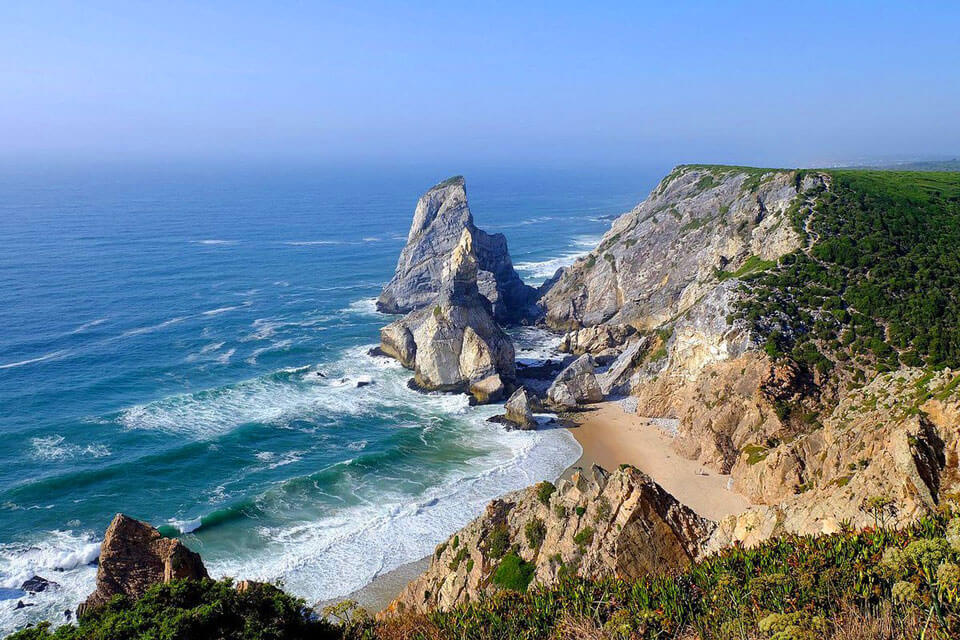
The weather at the westernmost point of Europe is characterized by constant wind. It can be very strong and gusty or moderate. After sunset, the wind becomes piercingly cold. If you plan to stay at the cape until dark, be sure to bring a warm sweater and jacket to avoid shivering from the cold. Even during the hottest summer months, when Portugal suffocates from the heat, it’s always cool here (+20-23°C).
The ocean water doesn’t warm above +20°C. In other coastal areas, 40-50 km away, the water temperature is +27-28°C, making it comfortable for swimming. If visiting the cape is a must on your Portugal trip, it’s best to arrive during the pre-sunset hours. All tourists who have been here at sunset leave enthusiastic reviews. The sight of the fantastic beauty of the landscape makes it seem like the surroundings are otherworldly.
Where to Stay
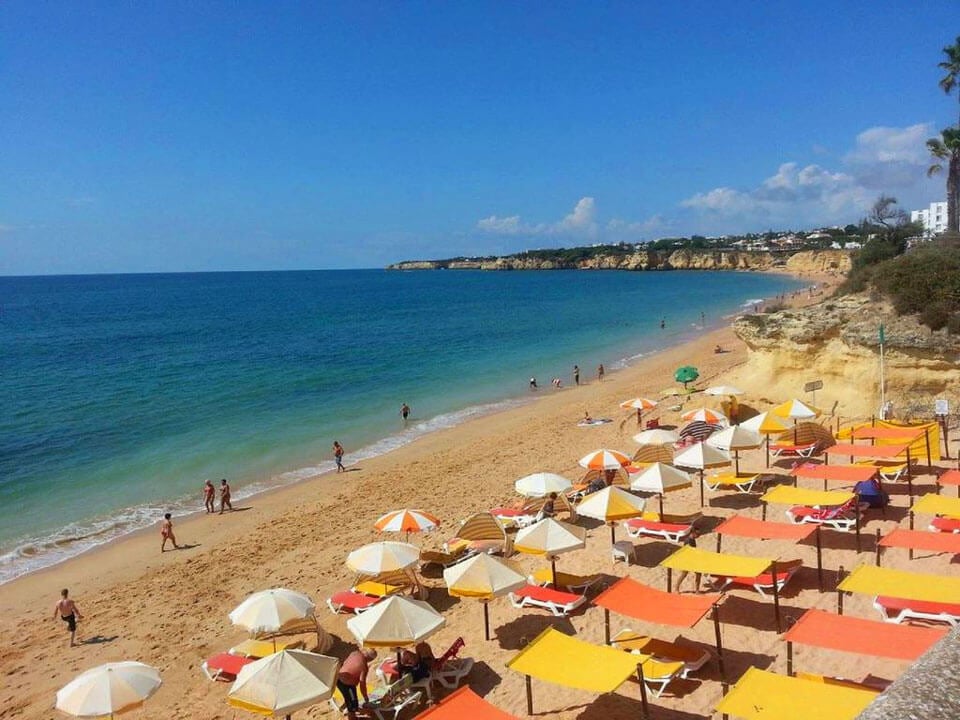
Planning to spend a few days on the edge of Europe? Numerous hotels provide comfortable stays in this unique place. Choosing hotels in Sintra will give you plenty of positive emotions from staying in this truly fairy-tale town. The modern Sintra Marmòris Palace complex is sure to impress.
The cozy, green garden surroundings, beautiful buildings, and maximum comfort will not disappoint. The guesthouse Sarrazola Garden is equally commendable, as guest reviews attest. A homely atmosphere, warm hospitality, and thoughtful amenities await you at the family complex Tivoli Palácio de Seteais 5*. Near Praia Grande Beach is Hotel Oceano, with panoramic windows offering views of the ocean’s sunrises and sunsets.

